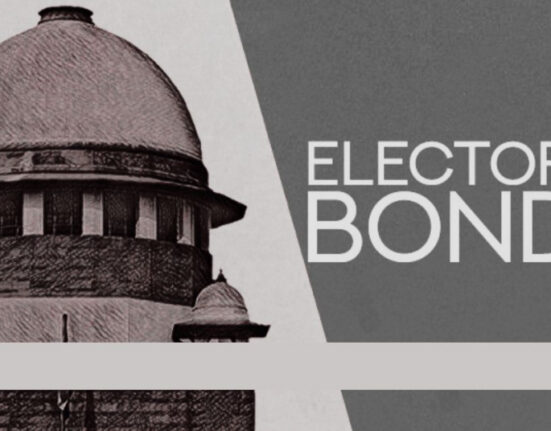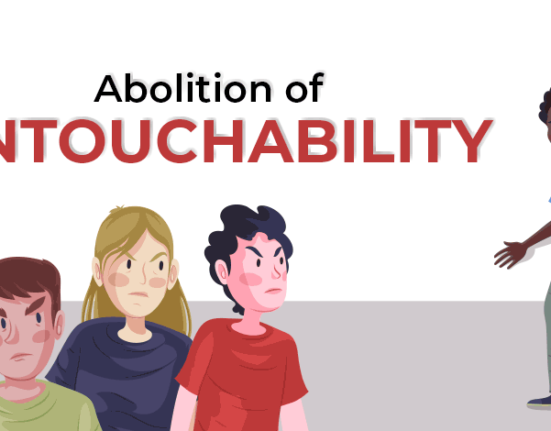The article “Euthanasia: Ethical Dilemmas and Personal Rights” is written by Anya Jeet, a third-year law student at the University of Lucknow” is written by Anya Jeet, a third-year law student at the University of Lucknow
Introduction
Euthanasia, commonly known as “mercy killing,” involves intentionally ending a person’s life to relieve intractable suffering, often due to terminal illness. The practice of euthanasia poses significant ethical dilemmas and legal challenges, prompting intense debate about personal rights and the moral implications of such actions. In 2016, the Government proposed a draft bill on passive euthanasia for the first time called “The Medical Treatment of Terminally Ill Patients (Protection of Patients and Medical Practitioners) Bill”. This bill makes provisions for patients of sound mind to make an informed decision regarding the withholding of medical treatment for themselves, paving the way for the implementation of passive euthanasia in the country1.
The legality of euthanasia varies widely across jurisdictions. Some countries, like the Netherlands and Belgium, have legalized euthanasia under strict conditions, emphasizing the patient’s autonomy and right to choose a dignified death. In contrast, many countries and regions classify euthanasia as illegal and equate it with homicide, focusing on the sanctity of life and potential abuses of such practices.
Ethically, euthanasia raises questions about the balance between compassion and the moral duty to preserve life. Advocates argue that allowing individuals to choose euthanasia respects their personal rights, offering a means to end suffering with dignity. Opponents, however, concerns that legalizing euthanasia could lead to undesirable and potentially harmful consequences beyond the initial scope of its intended use which could lead to non-voluntary or involuntary euthanasia.
Meaning and types of Euthanasia
The phrase “euthanasia” was coined by Sir Francis Bacon. It is also called as ‘mercy killing’. The Greek terms “Eu” (good) and “thanatos” (death) combine to form the word “Euthanasia,” which means “good death.” The term “euthanasia” describes the intentional taking of a person’s life, usually to stop their suffering.
Euthanasia is the practice of intentionally ending a life to relieve pain and suffering.
Assisted Suicide
“Intentionally helping a person take their own life by providing drugs for self-administration, at that person’s voluntary and competent request.”
Physician-assisted suicide is often misunderstood as euthanasia. The difference is in who administers the lethal drug. In euthanasia, a physician or third party administers it whereas in physician-assisted suicide, it is the patient himself who administers it, though on the advice of the doctor.
In a survey, approximately 60-80% of people in Western countries favour physician-assisted suicide for terminally ill patients.
Types of Euthanasia:
- Voluntary Euthanasia (with patients’ consent)– Euthanasia is performed with the patient’s consent. It is legal in some countries like Belgium, Netherlands, etc.
- Non-voluntary Euthanasia (patient’s consent unavailable)– Where a person is unable to give their consent (for example –the patient is in a state of coma or is severely brain-damaged) and another person decides on their behalf, often because the ill person had expressed a wish previously to end their life in such circumstances.
- Involuntary Euthanasia (without asking consent or against the patient’s will)–Euthanasia conducted against the will of the patient is termed involuntary euthanasia. It is also regarded as murder.
All types of euthanasia can be further divided into passive or active types:
- Active Euthanasia– where a person intentionally intervenes to end someone’s life with the use of lethal substances or forces.
- Passive Euthanasia– where a person causes death by withholding or withdrawing treatment that is essential to maintain life.
Historical Perspective
Ancient Practices
Euthanasia has been practised since ancient times. Before Hippocrates, it was common for physicians to end the lives of patients they deemed beyond recovery, often without seeking consent (Ney 1997), and frequently without seeking the patient’s consent. This practice was generally accepted as part of medical care at the time.
Hippocratic Reformation
The attitude towards euthanasia began to change with Hippocrates, a prominent figure in ancient Greek medicine. Hippocrates regarded this act of killing as a hindrance to the establishment of confidentiality between physicians and patients. Probably, this led to the use of these words in The Hippocratic Oath, “I will give no deadly medicine to anyone if asked, nor suggest any such counsel.” As the world has changed since the time of Hippocrates, some feel that the original oath is outdated. In some countries, an updated version is used
Modern Developments
The debate over euthanasia resurfaced in the 19th and 20th centuries, fueled by advancements in medical technology and changing societal values. The ability to prolong life through medical intervention raised questions about the quality of life and the ethics of prolonged suffering. In the early 20th century, euthanasia advocacy groups began to form, promoting the idea of “mercy killing” for terminally ill patients.
Legal Frameworks Around the World
The legality of euthanasia varies between countries and territories. Efforts to change government policies on the euthanasia of humans in the 20th and 21st centuries have met with limited success in Western countries. Euthanasia is distinct from assisted suicide, which may be legal in certain other jurisdictions.
- In Europe, euthanasia is only legal in the Netherlands and Belgium, provided certain conditions are met- the patient’s request must be voluntary and must be suffering from unbearable physical or mental suffering with no prospect of relief.
- In Belgium, euthanasia is only allowed if the patient is an adult.
- In the Netherlands, euthanasia is allowed for children aged between 12 and 16 years of age, with the consent of their parents or guardian and for individuals aged 16 years and above.
- In Japan, only passive euthanasia is permitted for patients who have been in coma for more than 3 months.
- Assisted suicide is legal in the Netherlands, Switzerland, and the state Oregon in the United States but have certain conditions- patient must be considered competent and aware of their situation.
- In Luxembourg, adult assisted suicide and euthanasia are both permitted. Patients must have a terminal illness that causes them to suffer uncontrollably and with no chance of recovery
- The Australian state of Victoria after 20 years and 50 failed efforts, approved laws allowing for voluntary euthanasia in November 2017.
- Colombia was the first Latin American country to decriminalize assisted suicide, allowing medical professionals to help end the lives of patients with serious and incurable conditions that prevent them from living a dignified life.
Legal Aspects of Euthanasia in India
In India euthanasia in any form wasn’t legal until the very recent Aruna Shaunbaug Case which reignited the long-existing debate in India between the right to life and the right to die.
This debate centres around a critical question: Does the right to life, as provided under Article 21 of the Indian Constitution, also include the right to die? Advocates argue that if Article 21 guarantees the right to a dignified life, it should logically extend to include the right to die with dignity. However, this interpretation contradicts with Section 309 of the Indian Penal Code, which states: “Whoever attempts to commit suicide and does any act towards the commission of such offence shall be punished with simple imprisonment for a term which may extend to one year.”
‘Right to Die’ is not a fundamental right under Article 21. Right to die is included in Article 21 of Constitution came up for consideration for the first time in Maruti Shripathi Dubal v. State of Maharashtra Case.
The Court held that the right to life also includes the right to die, but did not clearly explain how, life includes death. Apparently the two cannot coexist. Death is the absence of life.
On 26 April 1994 in P. Rathinam v. Union of India, a two-judge bench of the Supreme Court through Justice B.L. Hansaria invalidated Section 309 of IPC, on the ground that it violates Article 21.
On March 21, 1996 in Gian Kour v. State of Punjab, a five judge Bench of the Court overruled Rathinam and upheld the validity of section 309. It held that ‘right to life, under Article 21 of the Constitution, does not include right to die or right to be killed. The court made it clear that the ‘Right to Life,’ including the right to live with human dignity, would include the existence of such a right till the end of natural life. This also includes the right to a dignified life up to the point of death, including a dignified procedure of death.
However, according to the court, the ‘Right to Die’ with dignity at the end of life is not to be confused with the ‘Right to Die’ an unnatural death.
The Supreme Court on March 9 ruled that individuals had a right to die with dignity, allowing passive euthanasia with guidelines. The top court in 2011 recognised passive euthanasia in the Aruna Shanbaug case by which it had permitted the withdrawal of life-sustaining treatment from patients not in a position to make an informed decision. These guidelines for passive euthanasia—i.e. the decision to withdraw treatment, nutrition, or water—establish that the decision to discontinue life support must be taken by parents, spouse, or other close relatives, or in the absence of them, by a “next friend”. The decision also requires court approval.
The Aruna Shanbaug Case
The Aruna Shanbaug case is a landmark legal case in India concerning euthanasia. Aruna Shanbaug was a nurse at the King Edward Memorial Hospital in Mumbai who was sexually assaulted in 1973, resulting in severe brain damage and leaving her in a persistent vegetative state for 42 years.
In 2011, a plea for euthanasia was filed on her behalf by journalist Pinki Virani, seeking permission for the withdrawal of life support. The Supreme Court of India ruled against active euthanasia but allowed passive euthanasia under strict guidelines. This meant that life-sustaining treatment could be withdrawn for patients in a permanent vegetative state, but only with approval from the High Court.
The court’s decision set a precedent, allowing passive euthanasia in India while establishing a legal framework for such cases. The ruling was significant in shaping the debate around the right to die and the interpretation of Article 21 of the Indian Constitution, which guarantees the right to life.
Ethical Dilemmas
The controversial practice of euthanasia has been a topic of discussion for ages. When considering the issue, a number of variables come into play, including legal protections, morality, and the precedent it may set.
Arguments in favour-
Ezekiel Emanuel, an anti-euthanasia activist, claims that the justification for euthanasia has four key components.
- That people should be given the freedom to determine their own fate since they have a right to self-determination.
- Allowing a subject to pass away is preferable to letting them suffer any longer.
- There is no meaningful difference between passive (often permitted) and aggressive euthanasia (the underlying principle–the doctrine of double effect is unreasonable)
- Allowing euthanasia won’t necessarily have harmful repercussions. In order to prove that legalising euthanasia is generally trouble-free, pro-euthanasia campaigners frequently cite examples of other nations where it has been legalised, such as the Netherlands, Belgium, Luxembourg, etc.
Those in favour of euthanasia argue that a civilised society should allow people to die in dignity and without pain, and should allow others to help them do so if they cannot manage it on their own.
They say that our bodies are our own, and we should be allowed to do what we want with them. So, it’s wrong to make anyone live longer than they want. In fact making people go on living when they don’t want to violates their personal freedom and human rights. It’s immoral, they say to force people to continue living in suffering and pain.
Arguments against-
Emanuel asserts that opponents of euthanasia generally make the following four arguments. Ethics of Euthanasia is counter-argued here.
- Not every death is painful.
- Alternatives to euthanasia include ceasing active therapy while also effectively using painkillers.
- It is morally important to distinguish between active and passive euthanasia because
- Legalizing assisted suicide will place civilization on a precipice with unacceptably bad results. (In Oregon in 2013, the top five reasons people requested euthanasia weren’t related to suffering. Actually, it was a loss of self-respect and concern for burdening others).
Religious opponents of euthanasia believe that God gives life, and only God should decide when to end it. Other opponents fear that if euthanasia was made legal, the laws regulating it would be abused, and people would be killed who didn’t really want to die.
Personal Rights
Personal rights in the context of euthanasia centre around the fundamental principle of individual autonomy—the right to make decisions about one’s own life and death. This includes the right to choose a dignified end to life, particularly for those suffering from terminal illness or intractable pain.
Advocates argue that if individuals are entitled to make decisions about their own bodies and quality of life, this should extend to choosing euthanasia when facing unbearable suffering. Additionally, the principle of informed consent ensures that such decisions are made with full awareness and free from coercion, respecting each person’s autonomy and personal values.
The Common Cause judgment, passed by the Supreme Court of India in 2018 came as a landmark ruling upholding the autonomy of an individual on the grounds that no person can be compelled by State or any other power to “suffer”. Passive euthanasia now possesses unequivocal legal sanctity as a result of the law being articulated in the Common Cause judgment. The Supreme Court has laid down progressive guidelines that can be put to use until such legislation is enacted.
The debate over euthanasia in India is, however, still wide open as no legislation has been brought about and medical practitioners as well as individuals continue to rely upon the guidelines put forth by the Courts.
Conclusion
In conclusion, the legal status of euthanasia in India is complicated and changing. The Supreme Court allowed passive euthanasia under certain conditions in the Aruna Shanbaug case in 2011, but there is still no clear legal framework. A draft bill called “The Management of Patients with Terminal Illness – Withdrawal of Medical Life Support Bill” has been introduced but is not yet passed or implemented. The current legal situation depends on court decisions and the ethical views of the medical community, making it challenging for patients, families, and healthcare providers. A clear law is needed to balance individual rights with preventing misuse, ensuring a fair and compassionate approach to end-of-life decisions. Until then, debates and discussions will continue to shape the future of euthanasia in India.
Reference
https://www.bbc.co.uk/ethics/euthanasia/overview/problems.shtml
https://www.ncbi.nlm.nih.gov/pmc/articles/PMC5402774
https://humanrights.gov.au/our-work/age-discrimination/publications/euthanasia-human-rights-and-law
https://www.lexology.com/library/detail.aspx?g=247c8c66-b3ed-4179-bfe1-7df289a0cde5
- chromeextension://efaidnbmnnnibpcajpcglclefindmkaj/https://main.mohfw.gov.in/sites/default/files/44374928791462768288.pdf ↩︎







Leave feedback about this